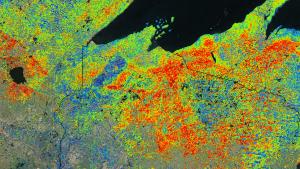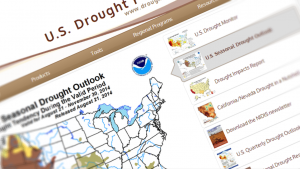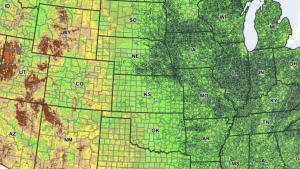Stressors and impacts
For decades, forest caretakers across the West followed a strategy of fire suppression: when branches broke off or trees died, the wood accumulated in forests, leading to heavy fuel loads. Combined with severe drought—a condition that occurs more frequently in our warming climate—wildfires in fuel-laden forests can burn very hot, destroying vegetation and the topsoil’s ability to hold water. Heavy precipitation events—another impact of our warming climate—spell trouble for severely burned areas: with little vegetation to hold things in place, fire debris, topsoil, and other material are vulnerable to erosion.
First fires, then floods, then lost water supply
Two major fires and subsequent flooding events motivated Denver-area water utilities to transform their business from water supply to watershed management. Together, the Buffalo Creek Fire in 1996 and the Hayman Fire in 2002 burned almost 150,000 acres in one of Denver’s most critical watersheds, the South Platte.
In July of 1996, just two months after the Buffalo Creek Fire, an intense summer storm dropped more than two inches of rain on the fire-ravaged area. In a single event, huge amounts of sediment and debris washed downstream into the Strontia Springs Reservoir, polluting the water and reducing the reservoir’s capacity. Water from Strontia Springs was unusable for two months. After the Hayman Fire in June of 2002—the largest wildfire in Colorado's history—significant rainstorms brought additional sediment and fire debris to the reservoir. All told, rains across the burned areas deposited over one million cubic yards of sediment and debris into the reservoir, an amount that would have taken around 40 years to accumulate without the fires. Restoration and dredging of the reservoir proved to be extremely costly and somewhat ineffective, prompting the utilities to invest in fire prevention and management techniques.
Forming partnerships to manage the watershed
Denver-area water utilities recognized that maintaining healthy forests upstream of their reservoirs would build their resilience against similar disasters in the future. As the issue was of critical importance to a range of stakeholders across the Denver metropolitan area, several local water utilities partnered with the U.S. Forest Service as well as corporate sponsors to foster regrowth and increase the resilience of healthy forests. Local partners have contributed over $20 million for projects on National Forest System lands, and they plan to invest approximately $10 million more in the future. These local funds are being leveraged with federal appropriations to bring the anticipated total 10-year investment (2009–2018) to almost $60 million.
Partnership funds are being used to build resilience through a range of initiatives. For instance, detailed assessments of watershed vulnerability help managers identify priority locations and appropriate strategies for improving forest health. They identify areas upslope of reservoirs and other critical water infrastructure and locations with a high risk of post-wildfire erosion.
Though the Hayman Fire wreaked havoc on area watersheds, it also helped to demonstrate the efficacy of applying proactive forest management techniques. Prior to the fire, portions of the surrounding forests had been thinned, mitigating fire severity and ultimately saving the reservoir from signfiicant erosion impacts. By applying forest-thinning strategies, hazardous fuel removal, and reforestation treatments in these areas, partners are are lowering their risk of experiencing similar disasters related to climate variability.




